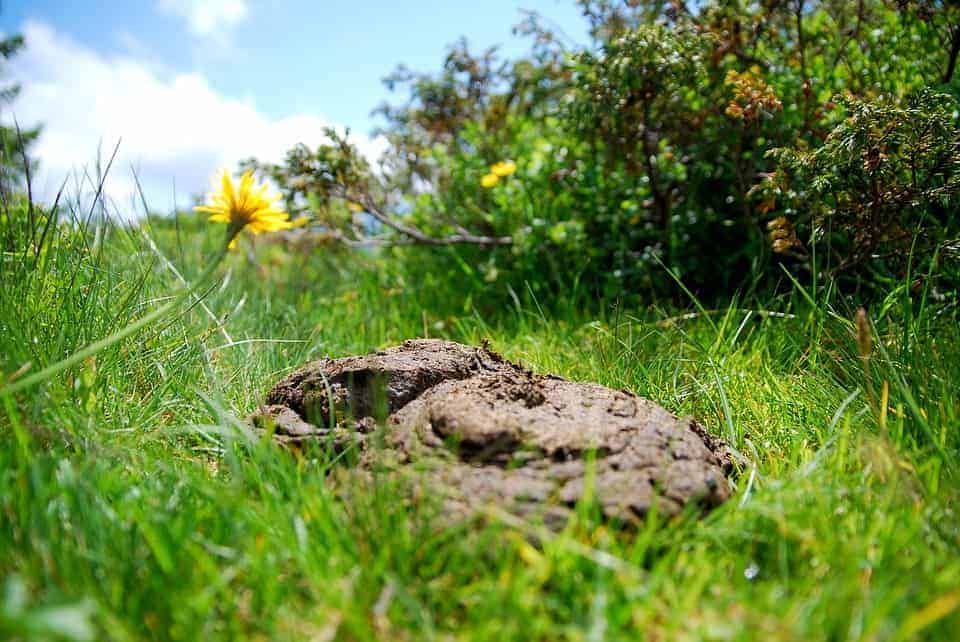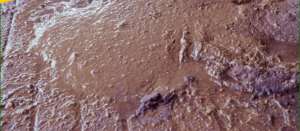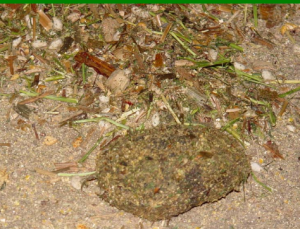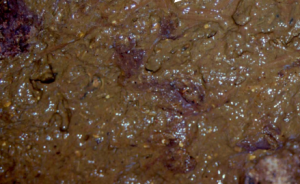
From Feed to Manure: How to Optimize the Chain to Ensure Cow Health and Production – Part 2
2. Manure Examination
Cow manure observation is one of the most simple and cost-effective methods of digestive examination and can be carried out right on the farm. However, it should be noted that the process does not offer any precise indications of nutritional problems, but merely provides some insight to what might be happening during the digestive process. There are no peer-reviewed scientific publications that prove the effects of specific types of feed or feeding practices on manure colour, consistency or content. Nevertheless, a farm nutritionist or veterinarian will be able to productively relate the findings of manure examination to the practices on the farm.
Three Cs of cow manure:
Colour: The colour of cow faeces is largely a result of feed type, bile content and the rate at which feed and digesta pass through the digestive tract. Typically, manure would be dark green when cows are fed predominantly green fodder or silage, and brown-olive when they are fed hay. When cows consume a typical TMR for example, their faeces is olive-yellow. In the case of gastrointestinal abnormalities, the faeces colour may change to grey. Some drugs might cause abnormally coloured faeces, and dark blood-coloured faeces might be due to haemorrhagic diseases such as dysentery, mycotoxins, or coccidiosis. Watery diarrhoea can result from bacterial infections such as salmonella, which makes faeces light-green or yellowish. When observing faeces for colour, make sure you observe at least 5-10% of the herd (more than three randomly selected animals in a small herd) and decide whether the problem is common, or is only affecting an individual cow. Nutrition-related problems tend to have a common source.
In the case of gastrointestinal abnormalities, the faeces colour may change to grey. Some drugs might cause abnormally coloured faeces, and dark blood-coloured faeces might be due to haemorrhagic diseases such as dysentery, mycotoxins, or coccidiosis. Watery diarrhoea can result from bacterial infections such as salmonella, which makes faeces light-green or yellowish. When observing faeces for colour, make sure you observe at least 5-10% of the herd (more than three randomly selected animals in a small herd) and decide whether the problem is common, or is only affecting an individual cow. Nutrition-related problems tend to have a common source.
Consistency: This is largely determined by the moisture content of the feed and the amount of time the feed remains in the digestive tract. Normal cow manure has a medium porridge-like consistency, voided in one go to form a dome-shaped pile on the floor, one to two inches high.  The consistency is so firm that the entire pile can be collected at once. When digesta passes too quickly through the rumen or large intestine, faecal consistency is moist to watery. If the feed is high in carbohydrates, or when rapidly-passed carbohydrates are fermented in the large intestine, faeces, tend to become moist to watery depending upon the extent of fermentation in the hindgut; large-scale fermentation causes an increased production of gas, which leads to foamy faeces. Loose faeces may result from excessive protein intake or high levels of rumen-degradable protein. If the animal is in heat stress, manure may be acidic in nature whereas low protein or water intake lead to firmer faeces. Dehydration results in faeces that is hard and ball-like. Frequent passage of faeces in small quantities may be due to irritation in the large intestine. Cows with left-sided displaced abomasum excrete pasty faeces. Constipation is due to an obstruction in the gastrointestinal tract.
The consistency is so firm that the entire pile can be collected at once. When digesta passes too quickly through the rumen or large intestine, faecal consistency is moist to watery. If the feed is high in carbohydrates, or when rapidly-passed carbohydrates are fermented in the large intestine, faeces, tend to become moist to watery depending upon the extent of fermentation in the hindgut; large-scale fermentation causes an increased production of gas, which leads to foamy faeces. Loose faeces may result from excessive protein intake or high levels of rumen-degradable protein. If the animal is in heat stress, manure may be acidic in nature whereas low protein or water intake lead to firmer faeces. Dehydration results in faeces that is hard and ball-like. Frequent passage of faeces in small quantities may be due to irritation in the large intestine. Cows with left-sided displaced abomasum excrete pasty faeces. Constipation is due to an obstruction in the gastrointestinal tract.
Content
Digestion in cows takes place through the process of anaerobic fermentation in the rumen, enzymatic digestion in the abomasum, and bacterial fermentation in the large intestine (though not as efficiently). Usually, cows are able to digest a varied range of feed. Large proportions of undigested grain or forage particles larger than 0.5 inches are indicative of poor rumen fermentation, and possibly of extensive hindgut or large intestine fermentation. The hindgut is not an absorptive area, so excessive fermentation in this segment of the intestine would lead to abnormal faeces. To avoid this, it must be ensured that there is enough chewable fibre in the feed and that there is an effective grass mat in the rumen to trap feed particles. The presence of large forage particles or undigested grains may indicate that cows are not ruminating properly or that the rumen passage rate is too quick. Presence of a substantial amount of large undigested grain particles indicates improper grain processing.
 |
 |
Detecting undigested grain particles takes keen observation, since these are not easily evident in wet faeces. They can, however, be easily observed in dry manure. A pale white colour on the surface of dried manure indicates undigested starch. The presence of excessive amounts of mucus or mucin casts is indicative of chronic inflammation of the gut tissue. Casts indicates injury to the large intestine, possibly caused by extensive hindgut fermentation and low pH. Mucin is secreted by an injured gut to protect and heal itself.
Please read the next blog on how to conduct an easy farm test on dung to evaluate digestion efficiency in cows
Read: How to Optimize the Chain to Ensure Cow Health and Production
